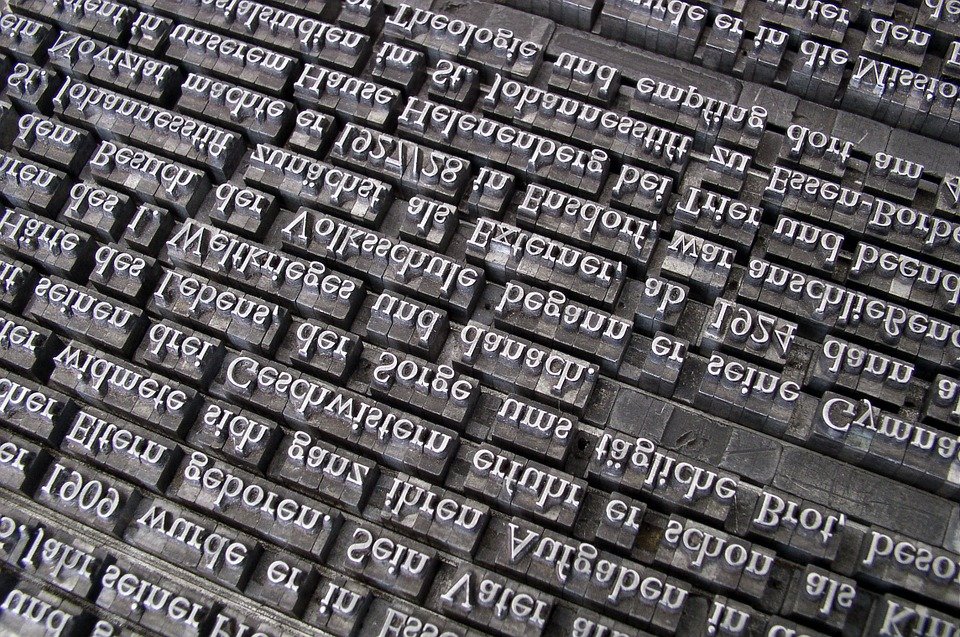Technology has immensely influenced the way the world around us functions. Digital disruptions have become the new norm, and the impact they have on every industry on a global level is astounding.
The printing industry has also been touched by digital innovations. This, in turn, has presented a radical change in the way print and printing has traditionally been perceived.
With widespread digital innovations that are coming to light, the following are some insights on the printing industry and its future.

Source: Pixabay
- Booming demand for personalisation
With the emphasis on AI, machine learning, IoT, data analytics, and automation, the communication process has become personalised to a great extent. The amalgamation of these technologies in digital printing is now making it possible to seamlessly and efficiently introduce a high level of print personalisation.
Different brands are already leveraging such customised service delivery to enhance the consumer experience, retention, and loyalty. Leading Original Equipment Manufacturers (OEMs) in the printing industry are improving their sales by catering to this increased demand. So, print personalisation can become a major trend, further promoting the robust development of the digital printing industry.
A pertinent example of digital print personalisation would be the named keyrings often found in gift shops or fizzy drink bottles with individual names.
- Leveraging the creative liberty of print
The creative freedom provided by print is still preferred by brands, agencies and designers. With the freedom to integrate branding ideas with no particular restrictions other than dimensions, print is a format that offers scope for brilliant creative design.
In order for print media to become vibrant, engaging and tactile with a premium feel, the industry has to innovate continuously and diversify its services to keep up with the ever-evolving trends. You can now intricately print on the stock that feels a lot like metal or wood; or emboss the grill on an image of a high-end car for its latest brochure, for example. Take the adverts of Ford Explorer or Peugeot for instance.
“The digital transformation in printing has already enabled great innovation and will continue to do so in the coming years. Digital print has evolved to be incredibly sophisticated and can deliver detailed, tactile print on a wide range of stocks. All this is possible without falling short on quality or cost for smaller, personalised runs”, suggests Miranda Benson, an academic expert who offers sample dissertation proposals for students. It has stemmed from the finer details of traditional litho printing but now has the capacity to deliver them quickly and cost-efficiently.
This has allowed brands to realise the huge immersive potential of print without the limitations that previously held them back.
- A significant emphasis on sustainable operations
Environmental sustainability is a major concern across different business sectors. That’s why printing industry has been trying to embrace more ecologically-viable operations for some time. The digital innovation in the printing industry is aiming to go beyond just the use of renewable resources, enhancing print accuracy to minimise emissions and wastage further.
Moreover, as more companies strive to meet their sustainability goals and decrease their carbon footprint, there is also an increased demand for UV-cured inks. Such inks are environment-friendly and don’t require any pre-processing of the substrate.
Not only do these inks come with anti-clog and quick-drying features, but are also suited for printing on different surfaces such as plastics, textiles, etc. and deliver excellent print quality.
The need to enhance sustainable processes is propelling growth in the demand for such UV-curing ink systems. This system is expected to grow exponentially within the digital printing industry, holding a humongous share of the ink market between 2017 and 2023.

Source: Pixabay
- Optimised operations and user convenience through cloud connectivity
In today’s flexible and interconnected business environments, business processes are increasingly getting digitised. Most of the operations are now conducted through cloud platforms, enabling accessibility and communication irrespective of time, location, and device.
This interconnectivity is also redefining the print and printing industry. Cutting-edge systems designed to amplify performance and productivity, like cloud-enabled Document Management Systems (DMS), let multiple users simultaneously access and edit a single document. This simplifies and optimises workflows and fosters better real-time collaborations. Businesses can leverage the Google’s cloud printing technology, in this case.
The growing amalgamation between devices and processes is also driving the adoption of digital cloud printing solutions. By integrating cloud computing into conventional printing processes, users can modify documents and execute print operations – anytime, from any device.
- Short-run and on-demand execution
In this age of ever-growing digital transformation, bulk printing orders are becoming redundant. Short-run is witnessing a rise in popularity, with more and more consumers demanding prints in limited quantities. Digital printing offers an extremely cost-effective, time-saving alternative to traditional printing on multiple media formats.
Digital printing eliminates the upfront expenses and time-consuming setups, such as the installation and cost of print plates, to decrease the operational costs and wastage.
Further, it offers the liberty of making adjustments in the content at the last minute, thereby ensuring that print operations are performed without any glitch. Marketers are also able to launch more contextual print campaigns on trending issues to drive relevance within their target audiences.
Endnote,
With the digital transformation, printing technology is evolving for the better. There are instances of the implementation of printing technology to connect with consumers in more meaningful ways. This way, businesses not only leverage their heritage in print but also connect smoothly with the online and digital world.
Author bio: Kefaya Hassan is a school teacher by profession, but she is also part-time contract law assignment writing at Myassignmenthelp Kefaya has a Ph.D. in Sociology

Aznan khan
Abhishek Nema